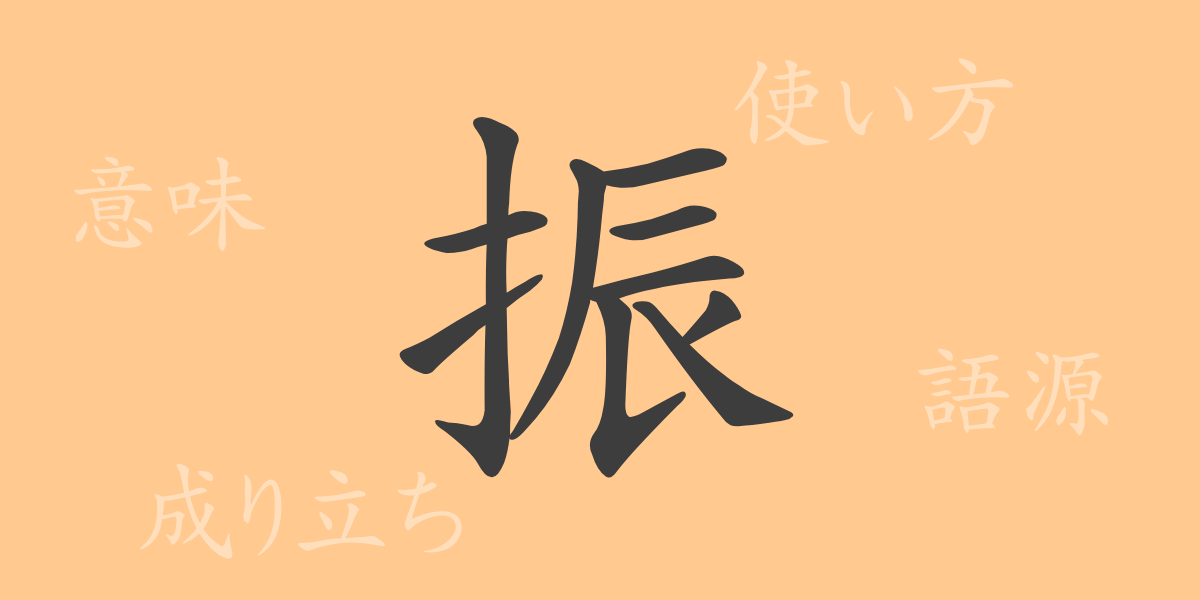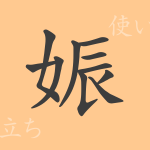In the rich tapestry of the Japanese language, each Kanji holds its unique history and significance, deeply influencing the way words are used. The Kanji ‘振’ (しん) is deeply integrated into various aspects of daily life in Japan. This article explores the origins, meanings, uses, and pronunciations of ‘振’, as well as its associated phrases and idioms.
Origins of 振 (しん)
The Kanji ‘振’ depicts the action of a hand moving something, a composition that evolved from ancient Chinese script. It combines the radical for “hand” with the phonetic element ‘辰’, suggesting various meanings related to the action of “shaking” or “swinging.”
Meaning and Usage of 振
‘振’ encompasses actions such as “to wield,” “to turn towards,” and “to look back.” It also extends to expressions like “to promote” or “to behave” in phrases like ‘振興’ (promotion) and ‘振舞う’ (to behave). Moreover, it can convey deception, as in feigning or pretending, adding a layer of complexity to its uses.
Readings, Stroke Count, and Radical of 振
The Kanji ‘振’ is versatile in its pronunciation and structure:
- Readings: On’yomi ‘シン’, Kun’yomi ‘ふる’, ‘ふるう’, ‘ふるえる’
- Stroke Count: 12 strokes.
- Radical: The ‘hand’ radical (てへん).
Phrases and Idioms Using 振
‘振’ appears in numerous idioms and phrases, reflecting various aspects of human interactions and behaviors:
- 振興 (しんこう): To enhance or promote, often used in the context of regional or industrial development.
- 振り返る (ふりかえる): To look back or reminisce.
- 振る舞う (ふるまう): To conduct oneself or show manners.
- 振り出しに戻る: A phrase meaning to go back to the start, often used when no progress is made.
- 振り袖 (ふりそで): A long-sleeved kimono worn by adult women, especially at formal occasions like the Coming of Age Day.
Conclusion on 振
The Kanji ‘振’ enriches the Japanese language with its diverse meanings from basic physical actions to broader social activities. Understanding ‘振’ offers insights into not just the language but also the socio-cultural practices of Japan, making it a pivotal element for anyone interested in Japanese culture and language.

























